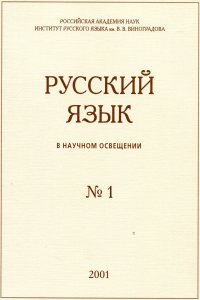Phrase finalizer in the Archangel’sk dialects: phonetic realization and phonological interpretation
Abstract:
This paper deals with the intonation of replies in Northern Russian dialects spoken in
Pinezhsky, Verkhnetoemsky, Mezensky, Leshukonsky and Vinogradovsky districts of
the Arkhangel’sk region. I show that the Northern Russian dialects that are discussed
have a distinct intonational phonology, with features uncommon for the Standard variety
of Russian: frequent use of a rising-falling pitch movement after the last nuclear syllable.
This means that the phonology of these dialects allows for several changes of pitch direction
after the nuclear syllable, a phenomenon not observed in Standard Russian (at least
not in neutral, non-modal speech). I introduce phrase tones in the intonational phonology
of these Northern Russian dialects in order to be able to describe the non-final high tone.
The study, based on the material of dialectal speech corpora and the author’s tape recordings
of dialectal speech made in the period of 1987–1999 (total duration — 47 hours),
reveals that the proper phonetic realization of the melodic contour in question (found
predominantly in the accented words with two or more post-stressed syllables) is the following:
low pitch associated with stressed syllable + rising tone immediately after the stressed
syllable + high plateau associated with a segmental string between stressed and
final syllables + falling tone associated with the final syllable of the intonational phrase +
low pitch at the end of the final syllable. In case of time pressure (realization of the tune
on a monosyllable) the contour may undergo compression, whereby the complete tune is
squeezed into the time available, while no truncation due to syllable count is revealed
because of very low rank of constraints limiting the number of tones that can be associated
with a syllable in Arkhangel’sk dialects. We finally suggest the L* H- L% phonological
interpretation of the contour (low pitch accent + high phrase accent + low boundary
tone) rather than the L* HL% alternative.


